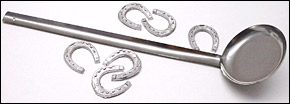FINNISH FOLK CUSTOMS
|
- HOME
- CATEGORIES
- PAPER PORCELAIN
-
BIRTH FLOWERS
- BIRTH FLOWER STATIONERY
- BIRTH FLOWER PORCELAIN CUPS NOVELTY CARDS
- BIRTHSTONE PIRATES
- BIRTH FLOWER FAIRIES
- JANUARY BIRTH FLOWER
- FEBRUARY BIRTH FLOWER
- MARCH BIRTH FLOWER
- APRIL BIRTH FLOWER
- MAY BIRTH FLOWER
- JUNE BIRTH FLOWER
- JULY BIRTH FLOWER
- AUGUST BIRTH FLOWER
- SEPTEMBER BIRTH FLOWER
- OCTOBER BIRTH FLOWER
- NOVEMBER BIRTH FLOWER
- DECEMBER BIRTH FLOWER
-
SEASONS
- FOLKFEST PAPER CRAFTS
- CLUB - CHRISTMAS IN JULY
- MOD SCANDI HOLIDAY BIRD
- SCANDINAVIAN CHRISTMAS - FOLK JUL
- REINDEER TOILE DE JOUY
- FOLK SANTA
- FOLK TREES
- POINSETTIA CRAFTS
- CHRISTMAS FAIRY
- XMAS JOLLY HOLLY
- XMAS JOLLY HOLLY LACE
- XMAS JOLLY HOLLY FASHION
- RED AND GREEN CUPS
- BLACK CHALKBOARD HOLIDAY CARDS TAGS
- HAPPY REINDEER
- SOLSTICE CRAFTS
- MUG GIFTS FAIRY/PIXIE
- SCOTTIE DOG HOLIDAY
- XMAS TOYS TREE
- RECYCLE CHRISTMAS CARDS
- SUMMER BUTTERFLIES
- GINGHAM STAR PICNIC
- DRAGONFLIES and LILIES
- SUMMER ROSE STATIONERY
- SUMMER ROSE SHOE CARDS
- DELFT BLUE BIRD
- BLACK CROW
- CROW PARADE
- AUTUMN LEAVES CRAFTS
- HALLOWEEN CRAFTS
- FASHIONISTA WITCH
- DAYS OF THE DEAD
- THANKSGIVING CRAFTS
- SHAMROCK BIRD
- SHAMROCK HEART
- PYSANKI EASTER EGGS
- DELFT RABBIT
- SPRING TULIPS
- EASTER DAFFODILS
- EASTER CHICKEN
- SHOE CARDS
- NEW YEAR CARDS
- ROSES and DIAMONDS BIRDCAGE
- ROSE HEART DIAMONDS
- RED HEART AND LOVE BIRDS
-
REASONS
- FOLKFEST BLOOMS BEVERAGES CRAFTS
- MERMAID PARTY AND CRAFTS PRINTABLES US
- MERMAID PARTY AND CRAFTS PRINTABLES UK
- ELLIE BABY SHOWER PRINTABLES US
- ELLIE BABY SHOWER PRINTABLES UK
- BUGBABY GARDEN LADYBUG PRINTABLES
- LUCK BUG
- METAL AND STEEL
- VINTAGE GOLF PATENTS
- GOLF PATENTS PRINTABLE POSTERS
- EXPIRED PATENTS CARDS
- VINTAGE TOOLS
- VINTAGE HARDWARE
- VINTAGE HARDWARE PRINTABLE POSTERS
- DELFT DESIGNS
- CRAFT TOOLS 3D MUG
- TEACHER'S APPLE
- MOTHERS DAY BOUQUET
- MOTHER'S DAY
- RED ROSE NOTELET BOX
- FOLK ROSES-GET WELL
- FATHER'S DAY
- BIRDCAGE BW WEDDING KIT
- LUCKY DOTS PARTY
- BW SOCCER SETS
- SOCCER SAFARI PRINTABLE BOOK
- SOCCER SAFARI PARTY
- TEENIE GREENIE PARTY
-
VINTAGE
- FARMHOUSE CHICKENS
- BIRDS OF A FEATHER CRAFT TOGETHER
- PINK AND GREEN LACE
- RED BLUE WHITE LACE
- RED AND WHITE LACE ROSES
- VINTAGE XMAS
- VINTAGE AMARYLLIS
- VINTAGE CRAFTS FOR MEN
- VINTAGE HALLOWEEN
- VINTAGE VALENTINE
- VINTAGE EASTER
- VINTAGE VEHICLES
- VINTAGE VICTORIAN SCRAPS 3D MUG
- VINTAGE SUNFLOWERS
- VINTAGE BLUE FLOWER CUP
- VINTAGE PINK FLOWER CUP



